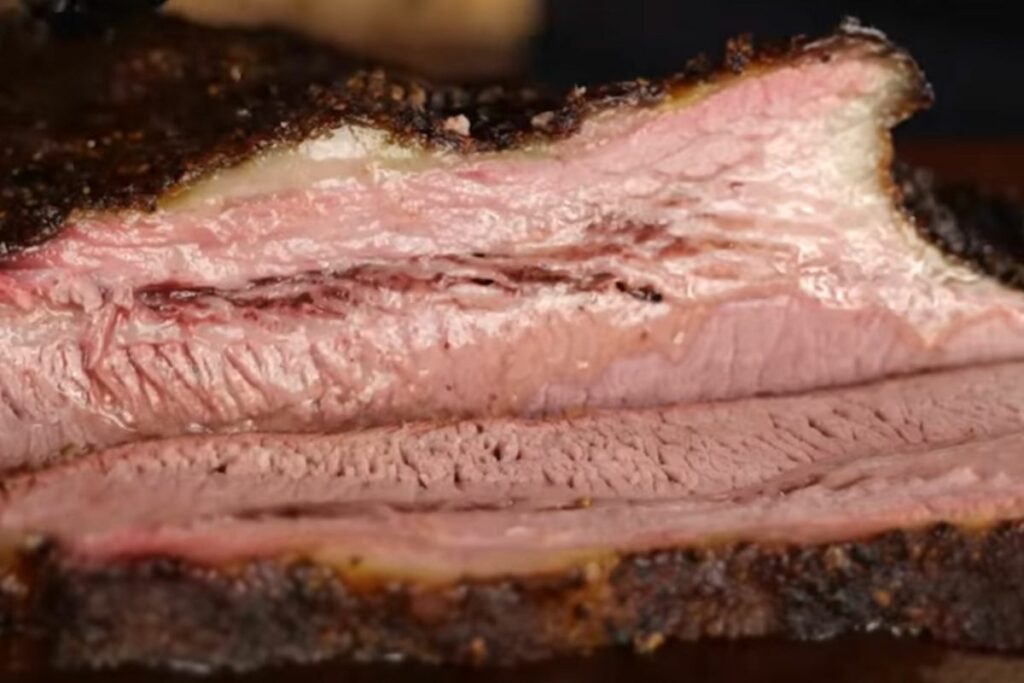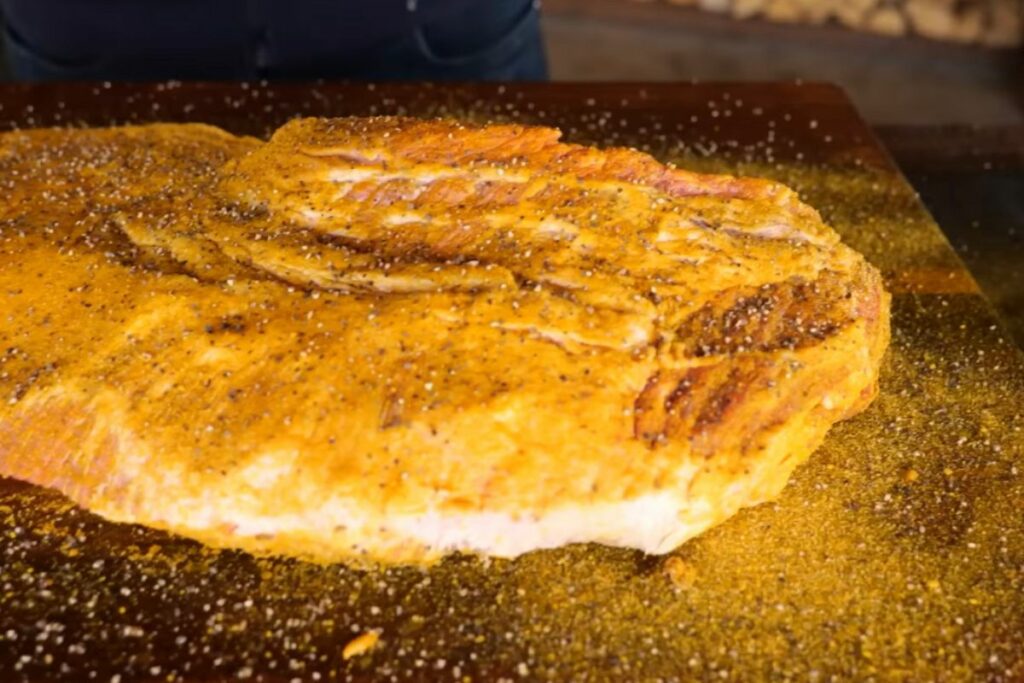Calling all aspiring Pitmasters, Grill Wizards, and Griddle Kings! If cooking meat manly style is your thing, then you’re in the right place. We totally understand that nothing beats chilling on the patio on a summer’s afternoon with your friends and family with a hunk of sizzling meat on the barbecue that would make Aaron Franklin drool, but you know what can really spoil the mood?
Underestimating the cooking time and cutting into that juicy prime cut and realizing that it’s nowhere near done. trust us that you don’t want to be the guy that ends up alone just because you served raw food to all your dearest loved ones. You’ll never live that down and you can’t even have a beer if you’re going to be on standby to drive people to the emergency room, so the afternoon might be kind of a bummer.
Improperly cooked meat can really put a dampener on an otherwise awesome day, so what do you do about it? Well, one way you can help make sure that your meat is cooked all the way through is to use a meat probe. No, it’s not cheating!
It’s called being thorough in your duties as Barbecue Boss, and besides who’s going to question your authority when you’re holding a six-inch-long spike of metal that can penetrate flesh and muscle? Absolutely nobody.
Now, you wouldn’t want to cut the meat and then put it back on the griddle if it needed longer because it might dry out and come out edible, but not nearly as succulent and tender as you had hoped. Just in the same way, you’re going to want to piece that pectoral muscle (that’s what a brisket is, folks) in just the right place that you get a good internal temp reading, but don’t let those all-important juices escape. With that in mind, we’re on a mission to help all you amazing grill-loving fellas and females probe a brisket like an absolute pro.

What Is A Brisket?
The brisket is a large muscle located at the top of the cow’s rib cage that runs from the shoulder blade to the sternum. The word comes from the French brise-cœur which means “break heart” or “cut heart”. Charming, right?
Oui, oui! Now, there are two main types of briskets. One is the flat and the other is often called the point. A flat brisket has a more rectangular shape than a point brisket and the point brisket is a thick, narrow oval-shaped muscle.
The thing to remember about the brisket cut is that a packer brisket is a set of the two muscles, usually connected by a thick fat layer. You could call either cut a brisket, or you could refer to the whole thing as brisket and neither would be wrong. A lot of butchers just sell the flat part but this is the toughest of the two, so getting the whole thing with the two muscles still connected is often thought best for barbecuing.
Your butcher might sell a packer brisket which is the flat and the point together, or they might sell them separately. However you’re cooking them, you should be aware that the brisket is the steer’s pectoral muscle, and since they don’t have collar bones as we do, these muscles are built to take a lot of weight and strain. That’s why they can be a little tough and even chewy.
Hence why it is so important that you cook that cut just right so that’s as tender as it can possibly be. That means keeping the juices sealed inside as much as possible and cooking or smoking it slowly and evenly. These are generally thought to be the best methods of outdoor cooking a brisket.
How Long Should I Cook My Brisket For?
How long do you have? No, seriously, because one of the biggest mistakes people make when cooking brisket is to cook it at too high a temperature, or to not cook it for long enough. Like we said before, the second is a big mistake because then you must choose between serving semi-raw meat or putting it back on the grill when it’s already been cut and watching those meat juices drain away and sizzle on the coals.
If you’re cooking your brisket on a grill, then recommendations are for the temperature to be at no more than 250 degrees, and at that temperature, you should aim for about an hour and a half per pound of brisket. That’s the rule of thumb for a beef brisket anyway, but remember that slower and lower are better for a tender brisket.
Also, take into account the thickness of the brisket. If it’s a fairly flat one then it won’t take as long to cook through as a plump, well-rounded hunk of meat will. Depending on the size of your brisket, you can expect to grill or smoke it for between 8 and 16 hours, so it’s probably a good idea to plan ahead a little and allow plenty of time for the cooking process.
Another tip for anyone who has successfully cooked the perfect brisket is this: don’t get cocky. Every brisket is different and will take varying amounts of time to cook perfectly and thoroughly, so stay humble and keep an eye on that brisket.

So, How Do I Know When My Brisket Is Done?
Well, first off, you need to know that a properly cooked brisket will feel firm to the touch. It should also have a nice pink coloration throughout its entire surface. There shouldn’t be any redness or discoloration anywhere else on the brisket either.
Only when you are almost certain that your brisket is done should you attempt to probe it. This is because the longer any cut of meat cooks with the seal of its skin, or sear broken the more moisture will escape, and the flavor with it too. That’s why you shouldn’t flip steaks too frequently because you risk damaging the steak and causing the natural meat juices to drain out. Bye-bye, perfectly succulent steak.
How Do I Probe My Brisket?
For the time being, we’ll act as if this is not a very suggestive question and get on with answering it. At the point when you are pretty sure the meat is cooked through you can then grasp your trusty meat thermometer as this is the part where it comes in handy.
You’ll want to insert the tip of the probe into the thickest part of the brisket. Make sure that you don’t go too deep though because you don’t want to puncture the muscle fibers and lose the juice. You probably won’t need to drive the probe down as far as the brisket flat.
Once you’ve found the perfect spot, set the dial on your thermometer to read 185 degrees Fahrenheit. That’s the ideal internal temperature for a properly cooked brisket. If it doesn’t reach this, then for the love of meat don’t stab it anymore to check it. Put the meat back in the heat and pray to the God of backyard barbecues the juices don’t escape.
Having said this, it’s ill-advised to cook a brisket only taking into account the inner temperature. Use the meat probe as a guide for internal temperature, but also pay attention to how it feels when you pierce the cut. If it feels like melted butter all the way to the center, then it’s likely that it is done. Now you can have a rest. The meat, that is.

Rest Easy
If you’ve been smoking your brisket then you’ll already have invested a good few hours into this hunk of cow, so don’t ruin it now by being too hasty. If you slice the piece of meat when it’s still super hot, then you’ll lose a lot of the juiciest parts that liquefy during the cooking.
Giving your meat a time of reduced heat resting after a day in the hotbox is the least you can do for your brisket. Keep it warm in a warmer or reduce the heat on your grill and keep it in there for a generous few minutes, some recommend that you rest it for upwards of an hour.
How Much Brisket Will I Need to Serve Per Person?
You should consider the shrinkage and the wastage of any cut of brisket you get because it is likely to be sold to you with a layer of fat still covering it. This is for you to trim immediately before you’re about to cook it and ensures that the flavor is sealed inside the meat until it’s time for it to hit the heat.
Considering this, you should aim for about half a pound of meat per person you’re going to be feeding. Use your own judgment to adjust your calculations accordingly for if you’re also serving other meat, or if there are small children there too. If they’re not old enough to tell you that the cow goes moo, then they’re really not going to eat half a pound of moo-no-more cow.
Final Thoughts
Brisket gets a bad reputation for being a tough cut of meat compared to fillet and the steak cuts, but that also makes it cheaper and therefore more popular than you’d think. Having said this, it’s super important that in order to make it taste like a million dollars (not literally- we don’t recommend that marinade) and not a budget cut, you’ll need to make every effort to serve it up in as juicy and tender a state as possible.
The key ways you can do that is to cook it at a low temperature slowly and do your best to keep the juices sealed inside the meat. Don’t get ahead of yourself and start probing it every hour with your digital thermometer to check if it’s done. You’ll end up with a dry and crispy cut of meat and not in a good way. Keep to our brisket cooking tips and you’ll soon be known as the Aaron Franklin of your neighborhood.
- Porterhouse Vs. Ribeye - May 16, 2022
- How Long To Smoke A Brisket Per Pound – Explained - May 16, 2022
- What Is A Tomahawk Steak? - May 16, 2022








